
Tongue diagnosis is a practice long used in traditional Chinese medicine. According to the principles of TCM, analyzing the appearance of an individual’s tongue can provide a greater understanding of his or her overall health.
Once a tongue diagnosis is completed and other aspects of the patient’s health are evaluated, the practitioner may recommend treatment with such therapies as acupuncture, acupressure, herbal medicine, food therapy and massage.
Why a Tongue Exam Used to Assess Health
In TCM, it’s thought that different areas of the tongue reflect the health of five corresponding organ systems: liver, lung, spleen, heart, and kidney. TCM is based on the theory that all of the body’s organs mutually support each other and that – in order to achieve optimal health – an individual’s organs must be in balance.
A Few Factors Considered in Tongue Assessment
Tongue Body Color
– Bluish Purple or Reddish Purple Tongue Body
– Red Tongue Body
– Red Tip
– Scarlet Tongue Body
– Dark Red Tongue Body
– Pale Tongue Body
– Green Tongue Body
Tongue Body Shape
– Stiff
– Flaccid
– Swollen
– Big or Enlarged Tongue
– Half the Tongue Is Swollen
– Local Swelling on One Side
– Swollen Sides
– Swollen Between the Tip and the Central Surface
– Swollen Edges
– Swollen Tip
– Short and Contracted
– Long
– Front Swollen
– Thin
Tongue Body Features
– Rough or Tender Texture
– Red Spots
– White Spots
– Black Spots
– Ulcerated Tongue Body
– Numb Tongue Body
– Loose Tongue Body
– Deviated Tongue Body
– Moving, Lolling, Wagging, Playful Tongue Body
– Rolled Tongue Body
– Teeth Marks on Tongue Body (Scalloped)
– Quivering or Trembling Tongue Body
– Sore Covered Tongue Body
Tongue Body Moisture
– Dry Tongue Body
– Slightly Dry Tongue Body
– Wet Tongue Body
Tongue Coating
– The tongue has a White Coat on the tongue
– There is a White Powder like Coat on the tongue
– There is a White Snow like Coat on the tongue
– There is a Yellow Coat on the tongue
– There is a Dirty Yellow Coat on the tongue
– It has Simultaneous White and Yellow Tongue Coating
– There is a Gray Coat on the tongue
– The tongue has a Black Coat
– It is Half Yellow, Half White (Longitudinally)
– It has Yellow Root With A White Tip
– It is Black in the Center, White and Slippery on the Sides
Tongue Coat Thickness
– Thin Coating
– Thick Coating
– Peeled, Mirrored, Shiny, No Coating
Tongue Body Cracks
– Horizontal Cracks
– Transverse Cracks On the Sides of the Tongue- Scalloped Tongue
– Crack in the Center
– Crack Down the Center to Tip
– Cracks Like Ice Floes
– Vertical Cracks in the Center
– Irregular Cracks
Tongue Coat
– Tongue Coat Has Root
– Tongue Coat Has No Root
Examples of Common Tongue Types
There are thousands of different tongue patterns, here are a few examples of common tongues we see and what they usually mean. You can use these examples to see what your tongue says about you.
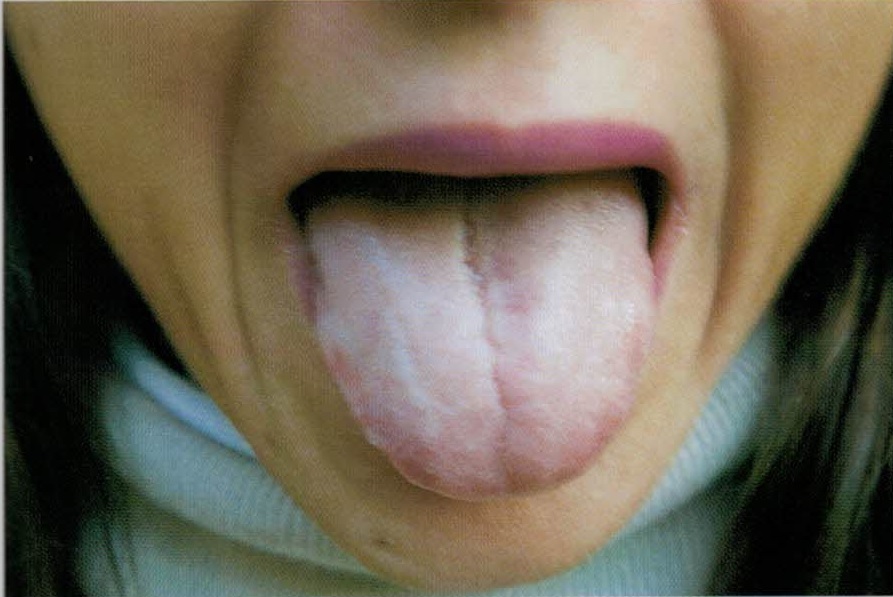
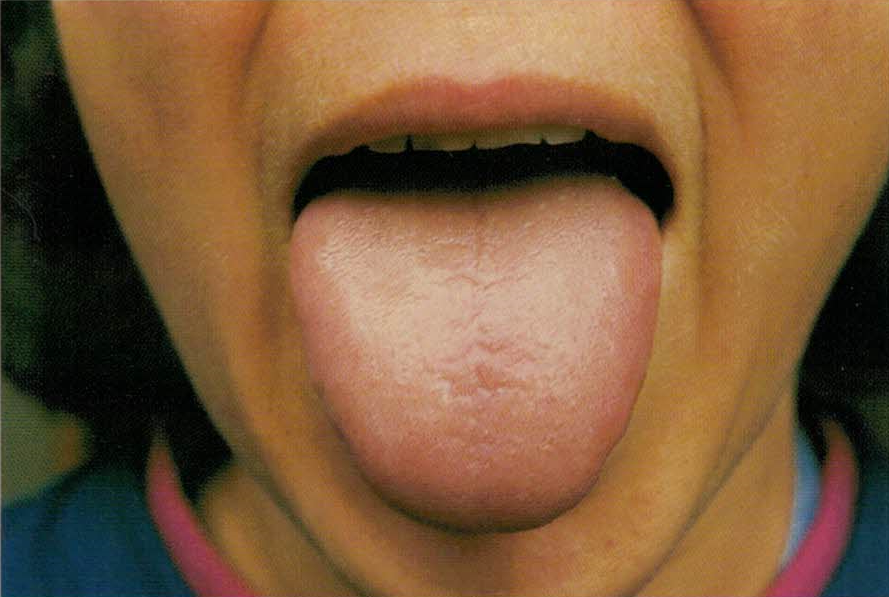

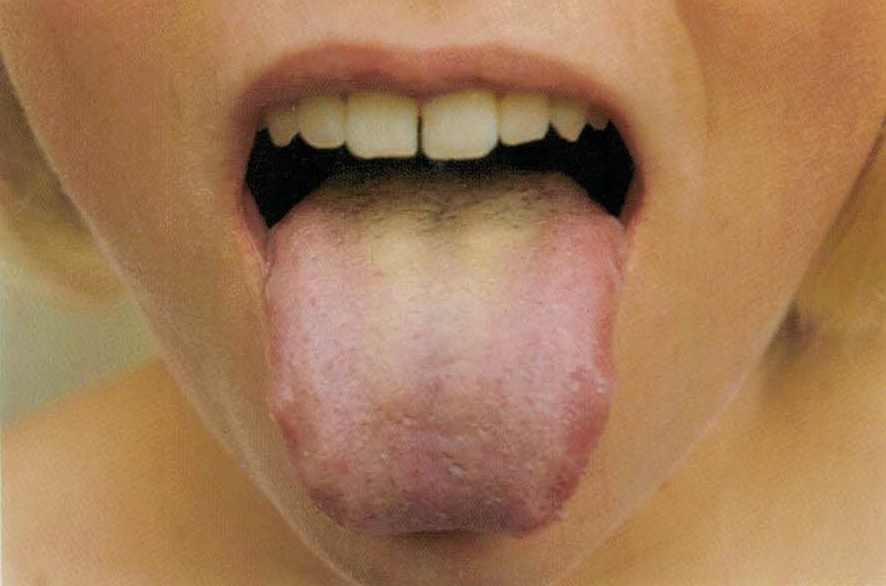
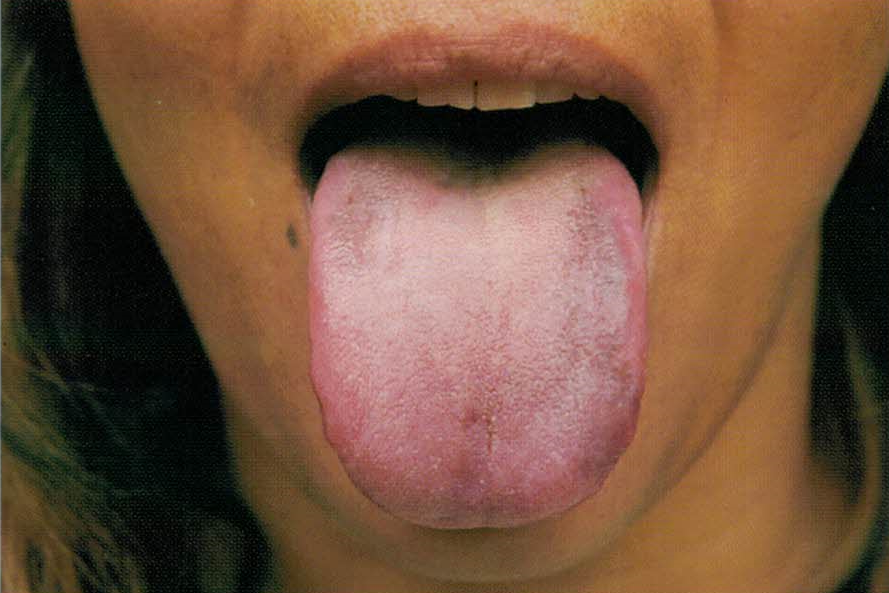
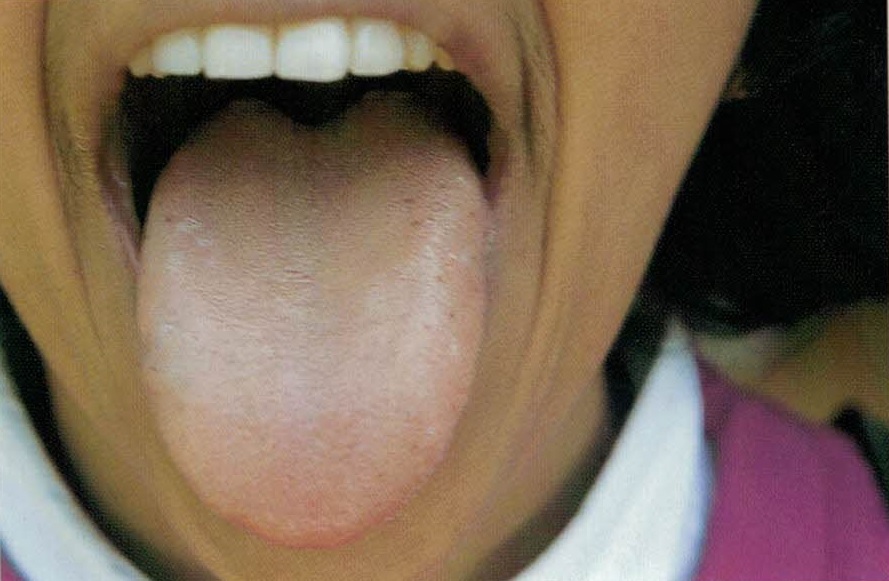
Tips
Here are some key points to keep in mind if you’re thinking of undergoing a tongue diagnosis.
- Some disorders don’t show up on the tongue. It should also be noted that TCM practitioners do not rely on tongue diagnosis alone in evaluating a patient’s health
- In most cases, the tongue is examined for no longer than 15 seconds at a time. Extending the tongue for longer may cause changes in tongue shape and color (two crucial elements of tongue diagnosis)
- Before receiving a tongue diagnosis, you should avoid food and beverages that might discolor your tongue (including coffee, beets, and foods made with artificial food coloring). Consumption of vitamin C may also affect your tongue coloring.
- If you use a tongue brush as part of your oral hygiene routine, discontinue use of the brush for at least a full day prior to your tongue diagnosis.
